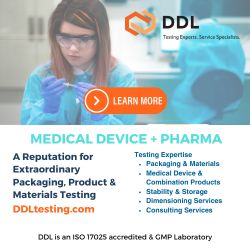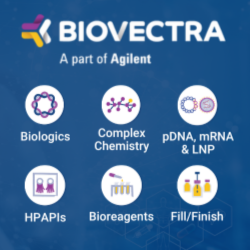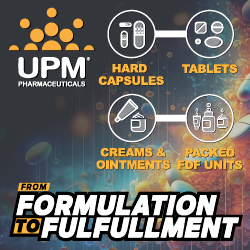Bio Platforms
Tagworks Pharmaceuticals Announces CTA Authorization & Initiation of Phase 0/1 Clinical Trial for TGW211, a Radiopharmaceutical for the Treatment of HER2+ Tumors
Tagworks Pharmaceuticals BV recently announced the Dutch regulatory authorities approved the Clinical Trial Application (CTA) for the CleavHER Phase 0/1 clinical trial, sponsored by the…
Denali Therapeutics Announces FDA Review Extension of BLA for Tividenofusp Alfa for the Treatment of MPS II (Hunter Syndrome)
Denali Therapeutics Inc. recently announced the US FDA has extended its review timeline of the Biologics License Application (BLA) seeking accelerated approval of tividenofusp alfa…
Bicara Therapeutics Announces Ficerafusp Alfa Granted Breakthrough Therapy Designation
Bicara Therapeutics Inc. recently announced the US FDA has granted Breakthrough Therapy Designation (BTD) to ficerafusp alfa in combination with pembrolizumab for the first line…
Shape Therapeutics Shares Breakthrough Preclinical Data for Non-Invasive Treatment of Parkinson’s Disease Using a Brain Targeted AAV Gene Therapy
Shape Therapeutics recently announced it presented new preclinical data highlighting the therapeutic potential of its lead product (SHP-201), a disease-modifying gene therapy for the treatment…
AviadoBio & UgeneX Therapeutics Announce Exclusive Option-License Agreement to Develop Next Generation Optogenetics Gene Therapy to Restore Vision in Patients With Retinal Disease
AviadoBio Ltd. and UgeneX Therapeutics, today announced an exclusive option and license agreement for the development and commercialization of UGX-202, an investigational, AAV-based gene therapy…
Ligand Partner SQ Innovation Receives FDA Approval for Lasix ONYU, an At-Home Treatment for Edema in Heart Failure Patients
Ligand Pharmaceuticals Incorporated recently announced that its partner SQ Innovation Inc. has received approval from the US FDA for Lasix ONYU (furosemide injection), a novel…
New Preclinical Data From Encoded Therapeutics Demonstrate Therapeutic Potential of its One-time, Non-opioid Gene Therapy Candidate for Chronic Pain
Encoded Therapeutics Inc. recently announced preclinical data demonstrating that its AAV9 microRNA (miRNA) gene therapy candidate achieved robust knockdown of SCN9A (NaV1.7), a key mediator of…
Rein Therapeutics Receives European Regulatory Approval to Initiate Phase 2 Trial of LTI-03 in Idiopathic Pulmonary Fibrosis
Rein Therapeutics recently announced it has received authorization from the European Medicines Agency (EMA) to initiate the Company’s Phase 2 RENEW clinical trial of its…
Annovis Announces Novel Biomarker Data in Alzheimer’s Patients Supporting Buntanetap’s Potential as a Disease-Modifying Treatment
Annovis Bio, Inc. recently announced new results that demonstrate buntanetap’s ability to attenuate inflammation and improve cellular health in Alzheimer’s patients, suggesting potential disease-modifying effects…
Zenas BioPharma & InnoCare Pharma Announce License Agreement Granting Zenas Rights for Three Autoimmune Product Candidates, Including Orelabrutinib, a BTK Inhibitor in Phase 3 Development for Multiple Sclerosis
Zenas BioPharma, Inc. and InnoCare Pharma Limited recently announced a transformational license agreement granting Zenas global development and commercialization rights to orelabrutinib for Multiple Sclerosis…
Lisata Therapeutics & Catalent Announce Global Antibody-Drug Conjugate License Agreement
Lisata Therapeutics, Inc. and Catalent, Inc. recently announced a global product license agreement that allows Catalent to incorporate Lisata’s certepetide into antibody-drug conjugates (ADCs) developed…
NurExone Demonstrates Reproducible, Dose-Dependent Vision Recovery in Preclinical Glaucoma Model
NurExone Biologic Inc. recently announced new preclinical results showing that its lead candidate ExoPTEN produces a reproducible, dose-dependent therapeutic effect in an eye model of glaucoma.…
CGT MANUFACTURING - Scaling CGT Manufacturing Inside the US: The New Regulatory Paradigm
John Tomtishen says amid shifting FDA priorities as well as developing geopolitical considerations, US companies are entering a new regulatory era, one that will define how CGTs are scaled, distributed, and delivered domestically.
EXECUTIVE INTERVIEW - Intensity Therapeutics: Providing Cancer Patients With Treatments That Work
Lew Bender, Founder and CEO of Intensity Therapeutics, discusses the company’s science, clinical program, the drug development process, and more.
Salipro Biotech Strengthens Global IP Portfolio With Two New Patents
Salipro Biotech AB recently announced the issuance of two new patents by the Japanese Patent Office. These patents further solidify the company’s intellectual property (IP)…
Resalis Therapeutics Reports Durable, Fat-Selective Weight Loss With RES-010 in Non-Human Primates
Resalis Therapeutics recently presented new preclinical results on its lead candidate RES-010, a first-in-class antisense oligonucleotide targeting microRNA-22 (miR-22). The data was presented at the European…
RheumaGen & SiVEC Biotechnologies Announce CGT Partnership & In Vivo Program to Cure Common Autoimmune Diseases
RheumaGen, Inc. and SiVEC Biotechnologies, Inc. recently announced a licensing and joint development agreement for a breakthrough class of gene-editing therapies designed to cure autoimmune…
NanoPhoria Bioscience Secures Funding to Advance Breakthrough Heart Failure Therapy & Expand Portfolio for Novel Nano-in-Micro Delivery Platform
NanoPhoria Bioscience recently announced the successful first close of its €83.5 million Series A financing round. The round was led by XGEN Venture, Sofinnova Partners,…
Oculis Accelerates Privosegtor Into Registrational Trials in Acute Optic Neuritis, Pioneering the Path for a Potential First-in-Class Neuroprotective Therapy
Oculis Holding AG recently announced the advancement of Privosegtor into a registrational program for neuro-ophthalmology indications following a positive meeting with the US FDA. Privosegtor…
Dyadic Applied BioSolutions Announces Milestone Achievements & Recent Company Developments
Dyadic International, Inc. recently announced the achievement of additional milestone payments in its collaborations with Proliant Health & Biologicals in life sciences and Inzymes ApS…
What are Bio Platforms?
Platforms (or asset-independent technologies to capture all kinds of capabilities that can be leveraged across many different drug candidate assets rather than just discovery tools that the term ‘platform’ immediately brings to mind) are ubiquitous in modern pharma. They are the product of an arms race, to secure access to the best capabilities in key areas.
Platform technologies are considered a valuable tool to improve efficiency and quality in drug product development. The basic idea is that a platform, in combination with a risk-based approach, is the most systematic method to leverage prior knowledge for a given new molecule. Furthermore, such a platform enables a continuous improvement by adding data for every new molecule developed by this approach, increasing the robustness of the platform.
But it has often been said that access to the latest technological platforms to aid efficient drug discovery and development is limited to Big Pharma, which can more easily justify the costs of creating and operating these platforms.
Benefits of Bio Platforms
Platform technologies have the ability to radically improve upon current products and generate completely novel products. In this sense, they open up new arenas for drug discovery and development, potentially increasing the number of therapeutic options for patients. Once a single compound or therapeutic has been generated and demonstrates a clinical benefit in patients, it is more likely this platform technology can successfully be applied to other therapeutic areas, derisking future compounds/products.
Complex drugs by their very nature are challenging and costly to manufacture. This, in turn, translates into higher costs for patients and other payers. In order to provide safe and effective therapies at a reasonable price, it is necessary for the industry to develop manufacturing technologies that reduce costs and provide a consistent product. While the initial investment may be larger, manufacturing costs will be lower over time as the manufacturing process is solidified.
Scale and Investment of Bio Platforms
Despite the initial upfront costs, platform technologies inevitably provide pragmatic solutions to production challenges, while yielding safer and more effective therapeutic products. It has often been said that one of the key features that distinguishes “Big Pharma” from biotech is access to the latest technological platforms to aid efficient drug discovery and development.
These platforms range from vast chemical libraries, ultra-high throughput screening and huge genetic databases in discovery, to predictive toxicology platforms, cutting-edge ‘omics’ and even deep-seated knowledge of particular therapeutic areas in development. All these platforms have two things in common: They can be used on any (or many) development candidate assets, and they cost huge sums to establish in the first place, and in a few cases each time they are used as well. Hence their restriction to the largest pharmaceutical companies (and a few of the so-called “big biotechs” that are, in many ways, indistinguishable from the old-guard pharma).
Only when you have hundreds of active projects can you justify the cost of creating and operating these platforms. Or so the mantra goes. It is access to these platforms that keeps the big companies ahead in the race to discover and develop the best medicines (or at least counterbalance the disadvantages of being large and slow-moving, depending on your point of view). But is that just an assertion? How much evidence is there to support the proposition that the efficiency gains due to these platforms outstrips the cost of creating and maintaining them?
Keeping these technologies “cutting edge” has become so expensive that increasingly we hear pharma companies talking of “pre-competitive” approaches to develop the next generation. A group of companies might develop a platform capability they then share. The principle goal of such initiatives is to access even grander and more expensive tools than individual companies could afford, rather than to dramatically cut costs (although sharing platforms rather than developing the same thing in parallel in each silo should at least keep a lid on rising costs).
















